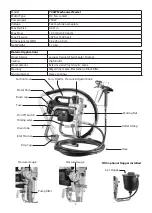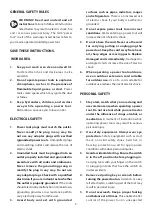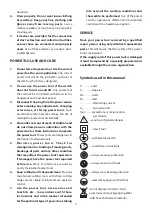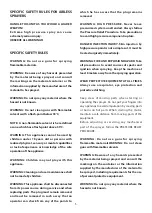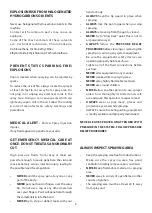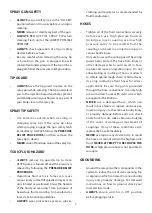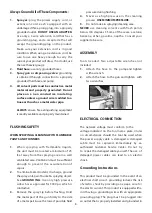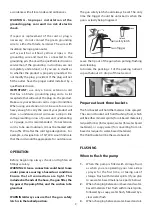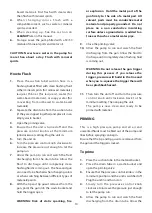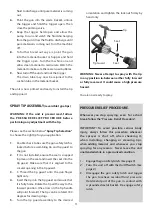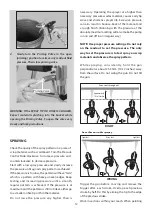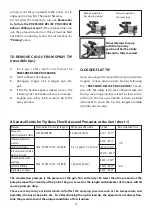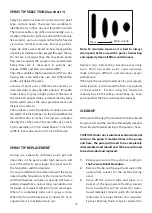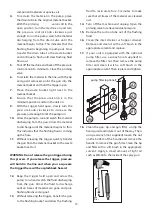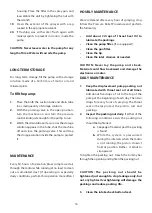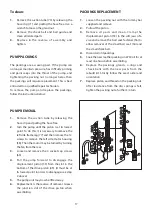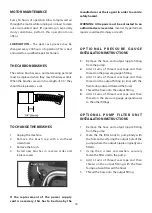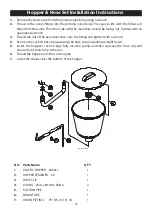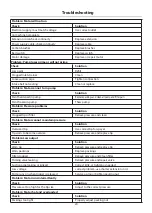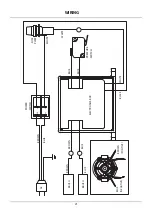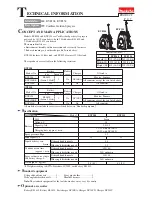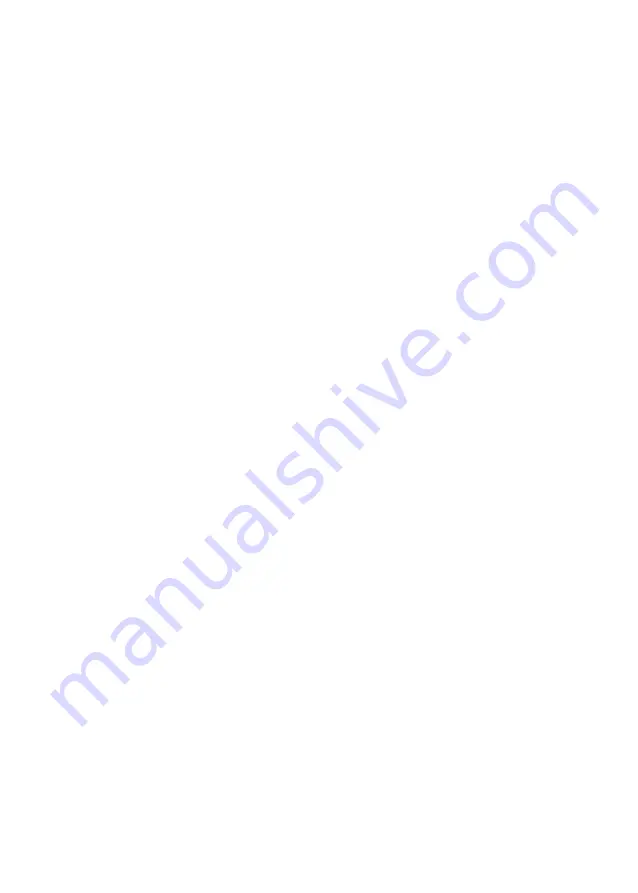
6
EXPLOSION RISK FROM HALOGENATED
HYDROCARBON SOLVENTS
Never use halogenated hydrocarbon solvents in this
machine.
Contact with aluminum parts may cause an
explosion.
Some of the most common of these solvents
are: Carbontetrachloride, Chlorobenzene,
Dichloroethane, Dichloroethyl Ether,
Ethylbromide, Ethylchloride, & Tethrachloethane.
PREVENT STATIC SPARKING FIRE/
EXPLOSIONS
Vapors created when spraying can be ignited by
sparks.
To reduce the risk of fire, always locate the sprayer
at least 20 feet (6 m.) away from spray area. Do
not plug in or unplug any electrical cords in the
spray area. Doing so can cause sparks which can
ignite any vapors still in the air. Follow the coating
& solvent manufacturers safety warnings and
precautions.
MEDICAL ALERT -
A
irless Spray Injection
Injuries
If any fluid appears to penetrate your skin,
GET EMERGENCY MEDICAL CARE AT
ONCE. DO NOT TREAT AS AN ORDINARY
CUT.
High pressure fluids from spray or leaks are
powerful enough to easily penetrate the skin and
cause extremely serious injection injury, leading to
the possible need for amputation.
• NEVER
point the spray gun at anyone or any
part of the body.
• NEVER
put your hand or fingers over the spray
tip. Do not use a rag or any other materials
over your fingers. Paint will penetrate through
these materials & into the hand.
• NEVER
try to stop or deflect leaks with your
hand or body.
• ALWAYS
have the tip guard in place when
spraying.
• ALWAYS
lock the gun trigger when you stop
spraying.
• ALWAYS
remove tip from the gun to clean it.
• NEVER
try to "blow back" paint, this is not an
air powered sprayer.
• ALWAYS
follow the
PRESSURE RELIEF
PROCEDURE
before cleaning or removing the
spray tip or servicing any system equipment.
•
Be sure the equipment safety devices are
operating properly before each use.
•
Tighten all of the fluid connections before
each use.
• NEVER
alter equipment in any manner.
• NEVER
smoke while in spraying area.
• NEVER
spray highly flammable materials.
• NEVER
use around children.
• NEVER
allow another person to use sprayer
unless he is thoroughly instructed on its safe
use and given this operator’s manual to read.
• ALWAYS
wear a spray mask, gloves and
protective eye wear while spraying.
•
ALWAYS ensure fire extinguishing equipment
is readily available and properly maintained.
NEVER LEAVE SPRAYER UNATTENDED WITH
PRESSURE IN THE SYSTEM. FOLLOW PRESSURE
RELIEF PROCEDURES
ALWAYS INSPECT SPRAYING AREA
•
Keep the spraying area free from obstructions.
•
Make sure the spraying area has good
ventilation to safely remove vapors and mists.
•
NEVER
keep flammable material in spraying
area.
•
NEVER
spray in vicinity of open flame or other
sources of ignition.
•
The spraying area must be at least 20 ft. away
from spray unit.
Summary of Contents for 700W Mechanical
Page 1: ...Original Instructions ...
Page 24: ......


